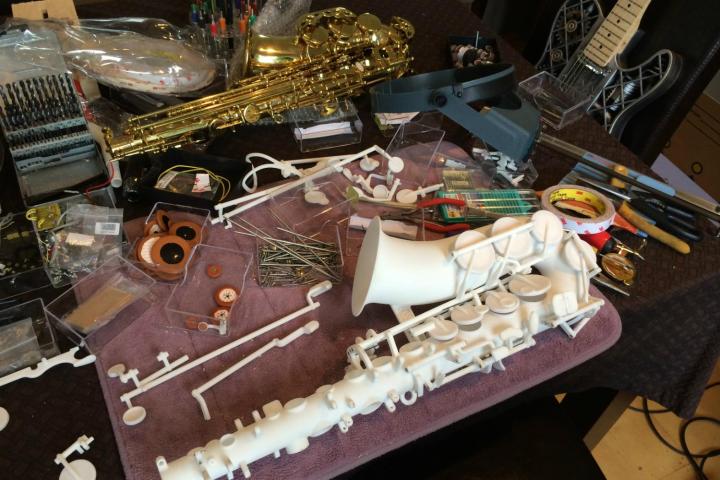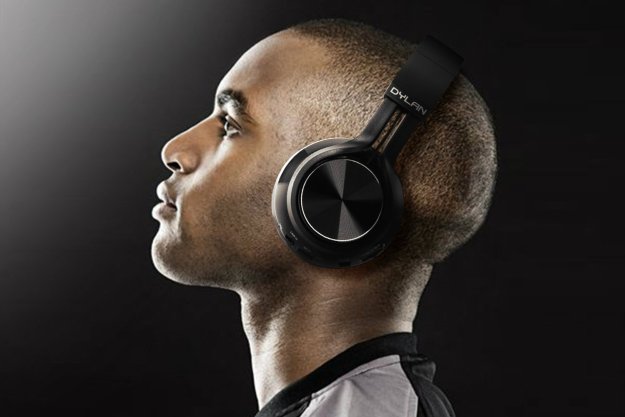
Diegel revealed the initial prototype when he demonstrated the nylon-based alto sax last week in a YouTube video. The instrument sounds like an alto saxophone – sort of – but the nylon body creates a decidedly different coloration than your average brass sax. Its creamy complexion and rubber band-supported keys also cause the instrument to immediately stand out visually from its metallic counterparts.
After briefly playing a few runs of notes with his creation, Diegel claims that he initially decided to give the sax a go “as an experiment, really just to see if (he) could print a saxophone.” He goes on to explain that the instrument has a handful of flaws primarily because he designed it like a traditional saxophone. Diegle claims that the piece needs a redesign to make it more friendly to its non-traditional fabrication. For the next iteration, he’ll be integrating all the springs directly into the keys to address air leaks in some of the pads.
Woodwind instruments like saxophones, flutes, and clarinets are incredibly hard to replicate, not only because of the distinct timbres (or the character of the sound) produced by their body styles, but also because of the delicate interconnection shared between all of the keys. The pressing of one key might actually open certain different keys and close others, which means the instrument has to have perfectly balanced pressure “linkages” to ensure the right tone and pitch is produced.
The instruments created by Diegel for his brand, ODD, were designed and crafted using a 3D-printing technology known as Selective Laser Sintering (SLS), which builds the components by spreading a thin layer of nylon powder that is fused in the correct locations for each particular layer of the component. The layer is then dropped down a fraction of a millimeter, and another layer of powder is spread on top of the first. This process is repeated until each 0.1-mm layer, and thus the component as a whole, is complete.
As a disclaimer, Diegel explains in the About section of his YouTube video: “I am not a sax player, so be amazed by what 3D printing is capable [of], rather than by how awful my sax playing might be.”


